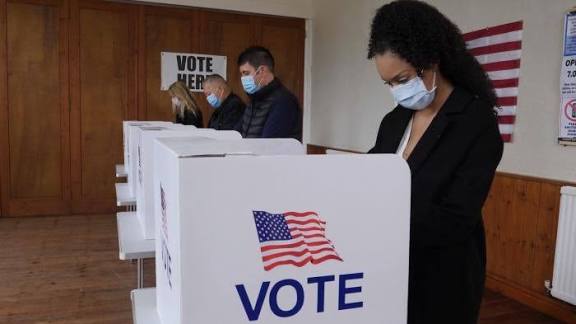Federal Agencies Strained: Staffing Shortages Trigger Internal Emergency Alerts

Recent news reports, especially from November 2025. Today we will discuss about Federal Agencies Strained: Staffing Shortages Trigger Internal Emergency Alerts
Federal Agencies Strained: Staffing Shortages Trigger Internal Emergency Alerts
In recent months, a troubling trend has emerged: multiple U.S. federal agencies are under severe staffing strain, leading not just to underperformance, but to internal emergency alerts—warning signs that institutional capacity is being pushed to the brink. As natural disasters, cyber threats, and systemic governance needs grow more frequent and complex, the human capital deficit in critical federal institutions poses serious risks to national security, public safety, and the basic effectiveness of government operations.
This article examines the root causes of this staffing crisis, its manifestations across key agencies, the implications for public service, and potential policy solutions.
Root Causes: Why Federal Agencies Are Understaffed

1. Budget Pressures, Hiring Freezes, and Attrition
Agencies across the board have been hit by hiring curbs and budget realignments. Budget uncertainty has also led to hiring freezes, with long-term consequences for workforce replenishment. Compounding the problem is attrition. Many agencies face a wave of retirements and voluntary departures, driven in part by buyout offers, early retirement incentives, and a growing perception of instability. These losses significantly diminish institutional memory and expertise.
2. Competition With the Private Sector
Attracting and retaining talent has become more difficult. Federal agencies are competing with private sector employers that can often offer greater flexibility, remote work, and higher compensation for comparable work. A particularly acute challenge is for mission-critical but highly specialized roles—engineers, cybersecurity experts, and scientific staff—who may find more attractive opportunities outside government.
3. Workforce Planning Failures
Some agencies have been criticized for poor workforce planning. Certain federal agencies lack forward-looking strategies to anticipate future needs in critical skill areas. This gap can leave agencies reactive rather than proactive in addressing staffing shortfalls.
4. Mission Creep and Emerging Responsibilities
Agencies like FEMA have seen their responsibilities broaden dramatically, especially in the wake of climate change-driven disasters and public health emergencies. These new demands often outpace staffing growth, leading to overextension. When staff are stretched too thin, it can undermine both preparedness and response.
Manifestations: Where the Strain Is Showing Up
FEMA (Federal Emergency Management Agency)
FEMA’s staffing challenges have been among the most widely documented. Workforce cuts and attrition have left FEMA critically under-resourced. At the outset of the 2025 hurricane season, only a small fraction of its incident management workforce was immediately available for deployment.
Meanwhile, some of FEMA’s training and recovery personnel have been reassigned or deployed to fill gaps elsewhere, even when they lack full qualifications for their temporary roles. This has contributed to significant processing delays, with backlogs of escalated assistance applications reaching hundreds of thousands.
Adding fuel to the fire, FEMA has terminated a number of probationary employees. Critics argue these cuts come at a moment when disaster frequency is rising, thereby weakening response and recovery capacity.
NOAA & National Weather Service (NWS)
The National Oceanic and Atmospheric Administration (NOAA), especially its National Weather Service, plays a critical role in issuing alerts, forecasts, and early warnings about weather hazards. But significant staffing gaps threaten those functions.
During major flooding events, lawmakers have flagged “severe shortages” in key NWS field offices, including lead meteorologists and staff forecasters. Some local offices have vacancy rates exceeding 10% at precisely the time when they are most needed. Experts have warned that staffing reductions could slow coordination between federal and local agencies in emergencies, compromising how quickly warnings are communicated and acted upon.
Cybersecurity and Infrastructure (CISA)
Cybersecurity is another acute concern. The U.S. Cybersecurity and Infrastructure Security Agency (CISA), tasked with defending national digital infrastructure, is reportedly operating with a significantly diminished workforce.
Due to recent budget constraints, CISA has had to furlough a large portion of its employees, leaving only a fraction to manage mission-essential operations like threat monitoring and incident response. Such a lean setup raises concerns about the agency’s capacity to counter cyberattacks targeting critical infrastructure.
Social Security Administration & Air Traffic Control
The ripple effects of staffing shortages are also felt in surprising places. The Social Security Administration (SSA) has temporarily closed some field offices due to limited staffing. Similarly, air traffic control is under strain, with internal alerts triggered when staff levels drop dangerously low. Such triggers increase the risk of disruptions, delays, or safety hazards in aviation operations.
Internal Emergency Alerts: What They Are and Why They Matter
When we talk about “internal emergency alerts” in this context, we mean formal or semi-formal signals—memos, system warnings, or staffing triggers—that departments or agencies issue when staffing levels fall below a threshold needed to operate safely or effectively.
These alerts may prompt:
Temporary slowdown or reallocation of operations: Some functions are deprioritized; personnel are redeployed or stretched.
Heightened risk escalation: Insufficient staffing in disaster response agencies could delay mobilization, reduce coordination, or slow aid delivery.
Operational vulnerabilities: In cybersecurity, fewer people means slower detection and response to threats.
Regulatory and administrative backlogs: Without adequate staff, internal workflows like permitting, licensing, or claims processing suffer.
Morale and retention issues: Repeated alerts and staffing emergency signals can further demoralize employees, accelerating attrition.
These alerts are not just internal HR warnings—they are red flags for public safety, continuity of government, and institutional resilience.
Implications: Why This Crisis Matters
1. Public Safety Risks
Understaffed disaster response and forecasting agencies increase the risk that citizens may receive delayed or less accurate warnings during emergencies. This can have catastrophic consequences, especially as climate events grow in frequency and intensity.
2. National Security Threats
Inadequate staffing at cybersecurity agencies weakens the nation’s digital frontline. With fewer staff to monitor threats, coordinate responses, and support infrastructure partners, the potential for a damaging cyber event grows.
3. Erosion of Public Trust
Persistent underperformance can erode public confidence. When call centers don’t answer, applications get backlogged, or field offices shut temporarily, citizens begin to question whether their government is capable of delivering foundational services.
4. Institutional Fatigue
Repeated internal alerts and workforce stress contribute to burnout. Employees stretched thin across multiple responsibilities may experience lower morale, leading to further exits—worsening the cycle.
5. Long-Term Strategic Weakness
Without robust workforce planning and investment, agencies risk losing critical institutional knowledge. High turnover means planning for future crises becomes increasingly difficult.
Policy and Strategic Solutions: How to Address the Strain
Addressing widespread staffing shortages across federal agencies requires a multipronged approach. Here are several potential solutions:
A. Strengthen Workforce Planning
Strategic Hiring Forecasts: Agencies should develop long-term workforce plans, identifying critical skill gaps and anticipating future mission needs.
Succession Planning: When senior and specialized staff leave, agencies should have clear succession pipelines to preserve institutional knowledge.
B. Reform Hiring and Retention Incentives
Flexible Work Models: Implement remote-work, hybrid schedules, and flexible hours to compete with private-sector options.
Retention Bonuses and Career Pathways: Offer incentives for high-demand roles (e.g., cybersecurity, meteorology) and create clear career ladders.
Modernize Hiring Systems: Simplify application processes and make hiring platforms more user-friendly, especially for technical roles.
C. Invest in Training and Capacity Building
Cross-Training: Equip staff with multiple competencies so they can be redeployed effectively during emergencies.
Certifications and Professional Development: Support employees in gaining relevant certifications to build institutional capacity.
Rapid Onboarding for Surge Needs: Establish reserve or surge workforce pools who can be quickly mobilized in crises.
D. Secure Budget Stability
Long-Term Funding Commitments: Provide multi-year funding for critical agencies, reducing reliance on stop-gap measures.
Contingency Staffing Funds: Allocate dedicated funds for surge staffing during disaster seasons or emergencies.
E. Strengthen Internal Alert Systems and Risk Monitoring
Early Warning Mechanisms: Standardize internal alert protocols across agencies, so leadership can act before critical thresholds are breached.
Cross-Agency Coordination: Set up interagency forums for identifying and responding to staffing triggers, especially in linked domains like disaster response and weather forecasting.
F. Oversight and Accountability
Regular Audits: Conduct independent reviews of agency staffing, alert protocols, and capacity.
Congressional Engagement: Legislators should require progress reports on hiring, attrition, and internal alert response.
A Call to Action: Why We Can’t Wait
Staffing shortages in federal agencies are not merely a bureaucratic headache—they are a systemic risk with real-world consequences. When agencies tasked with responding to emergencies, forecasting disasters, and defending national infrastructure lack the workforce they need, red flags should not be ignored.
Internal emergency alerts triggered by low staffing should be treated as urgent calls for reform—not temporary patches. It is incumbent on both political leadership and civil service managers to act decisively: to invest in people, to stabilize funding, and to rebuild institutions capable of meeting 21st-century challenges.
Failure to address these issues will erode our ability to respond to disasters, defend digital infrastructure, and maintain public trust. As the federal workforce crisis deepens, our national resilience depends on fixing it—before the next emergency alert goes unheeded.
How useful was this post?
Click on a star to rate it!
Average rating 0 / 5. Vote count: 0
No votes so far! Be the first to rate this post.
About the Author
usa5911.com
Administrator
Hi, I’m Gurdeep Singh, a professional content writer from India with over 3 years of experience in the field. I specialize in covering U.S. politics, delivering timely and engaging content tailored specifically for an American audience. Along with my dedicated team, we track and report on all the latest political trends, news, and in-depth analysis shaping the United States today. Our goal is to provide clear, factual, and compelling content that keeps readers informed and engaged with the ever-changing political landscape.




